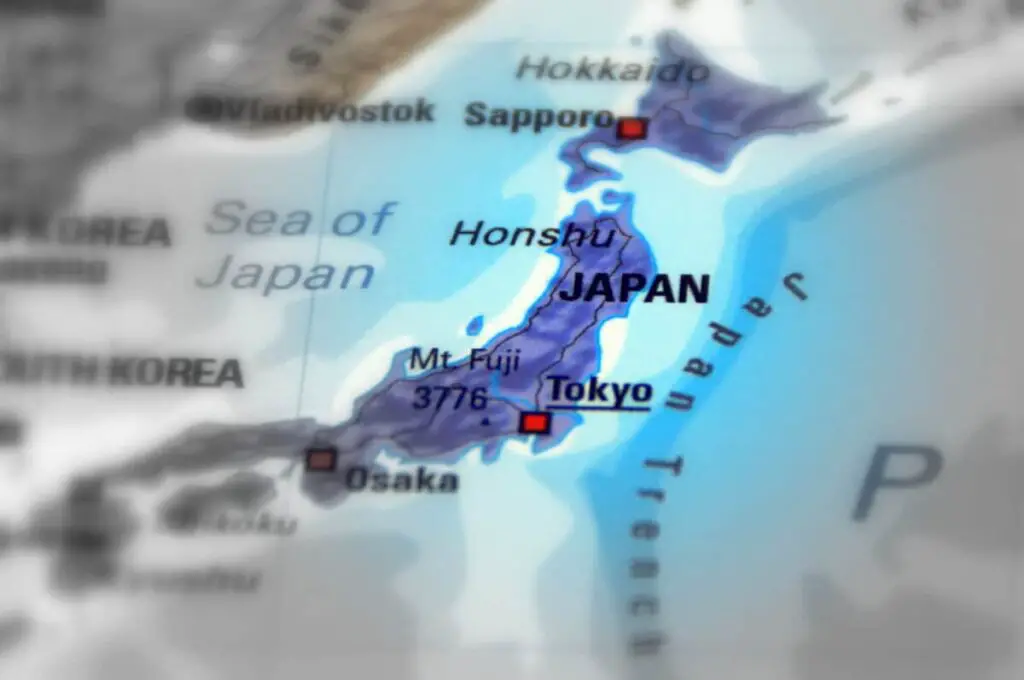In Japan, the calendar date is written as year/month/day, the opposite order of the European writing of day/month/year. Additionally, dates in Japanese include the kanji characters for day (日, nichi), month (月, gatsu), and year (年, nen). For example, November 15th, 2020 would be written as 2020年11月15日.
If you’re planning on traveling to Japan, understanding how to read and say dates will be an essential part of your journey, you definitely want to make sure you can stick to your itinerary plans while making new and exciting ones.

Keep reading to learn more about writing days, weeks, and months in Japanese, a special understanding of kanji characters relating to dates, and how the Japanese calendar works.
Years in Japanese
To state the year in Japanese simply, just use the current year and add the character 年 (nen) for the word year. For example 2020年
However, the year can also be written differently. Though the Japanese will typically use the Gregorian calendar, they can write the date according to the Japanese calendar (called the “imperial calendar” in English) based on the reigns of Japanese emperors.

If you’re traveling to Japan, you’ll see dates written this way on formal documents or other important items like wedding invitations, postage, and celebrations. This method of dating is also used on Japanese coins.
Japan is currently in the Reiwa (令和) era and has been since May 2019; the former Heisei (平成) era began in 1989. If you need to convert years between these two calendars, you can use the Gengou Free app. Here’s a handy table you can use to get a feel for these dates:
| Japanese | Translation | Gregorian Year |
| 平成29年 | Year 29 of the Heisei era | 2017 |
| 平成30年 | Year 30 of the Heisei era | 2018 |
| 平成31年 | Year 31 of the Heisei era | 2019 (January-April) |
| 令和1年 | Year 1 of the Reiwa era | 2019 (May-December) |
| 令和2年 | Year 2 of the Reiwa era | 2020 |
| 令和3年 | Year 3 of the Reiwa era | 2021 |
Months in Japanese
Writing the months in Japanese works the same as the year. Use the number of the current month followed by the kanji character 月 (gatsu). Sometimes, kanji characters for the numbers 1-12 can be used in place of Arabic numerals. The table below shows the complete kanji for all twelve months of the year.
Be mindful of the pronunciations for April, July, and September. Though you would typically use yon (4), nana (7) and kyuu (9) for these numbers, shi (4), shichi (7) and ku (9) are used when reading the months of the year.
| Japanese | Romaji | English |
| 一月 | ichi-gatsu | January |
| 二月 | ni-gatsu | February |
| 三月 | san-gatsu | March |
| 四月 | shi-gatsu | April |
| 五月 | go-gatsu | May |
| 六月 | roku-gatsu | June |
| 七月 | shichi-gatsu | July |
| 八月 | hachi-gatsu | August |
| 九月 | ku-gatsu | September |
| 十月 | jyu-gatsu | October |
| 十一月 | jyuichi-gatsu | November |
| 十二月 | jyuni-gatsu | December |
Days of the Week in Japanese
The Japanese week officially begins on Sunday, so this is the first day of the week on the calendar.
Each day of the week is named after a combination of Chinese philosophies and the five Taoist elements: wood, fire, earth, metal, and water. Each name also ends with the kanji 曜日 (youbi), meaning “day”.

Days of the week are almost always written in kanji, so it’s essential to become familiar with their translation if you’re planning any outings in Japan.
| Japanese | Romaji | English | Meaning |
| 日曜日 | nichi-youbi | Sunday | Day of the Sun |
| 月曜日 | getsu-youbi | Monday | Day of the Moon |
| 火曜日 | ka-youbi | Tuesday | Day of Fire |
| 水曜日 | sui-youbi | Wednesday | Day of Water |
| 木曜日 | moku-youbi | Thursday | Day of Wood |
| 金曜日 | kin-youbi | Friday | Day of Gold |
| 土曜日 | do-youbi | Saturday | Day of the Earth |
Days of the Month in Japanese
You’ve probably gotten used to rather simple rules in Japanese dates, so this is where we have to add a small amount of complexity to it.
Though the typical format for stating a day of the month is the number with 日 (nichi) proceeding it, over half the days of the month are read in an irregular form.
From 11日 (jyuichi-nichi) and onward, the number+nichi formula works, except for the 20th.
Here’s a table detailing those irregular forms:
| Japanese | Romaji | English |
| 1日 | tsuitachi | First |
| 2日 | futsuka | Second |
| 3日 | mikka | Third |
| 4日 | yokka | Fourth |
| 5日 | itsuka | Fifth |
| 6日 | muika | Sixth |
| 7日 | nanoka | Seventh |
| 8日 | youka | Eighth |
| 9日 | kokonoka | Ninth |
| 10日 | touka | Tenth |
| 20日 | hatsuka | Twentieth |
Saying the Date
We’ve gone over how to write and read the date, but what if someone asks you for that information? How do you say date in Japanese? Saying a full date in Japanese is very similar to how you would say it in English: you simply place the day of the month after the month itself.
Today is November 15th
今日は11月5日です
Kyou wa jyu-ichi gatsu jyu-go nichi desu
Common Phrases
Now you know how to read, write, and speak a complete date in Japanese, but how can you use that information? Here are some common Japanese sentences about dates that might come in handy for you:
What day is it today?
今日は何日の何曜日ですか。
Kyou wa nan-nichi no nan-youbi desu ka.
Today is Sunday, March 10th.
今日は3月10日の日曜日です。
Kyou wa san-gatsu touka no nichi-youbi desu.
This year is 2019.
今年は2019年です。
Kotoshi wa ni-sen jyu kyuu-nen desu.
February 4th is Monday.
2月4日は月曜日です。
Ni-gatsu yokka wa getsu-youbi desu.
Can I make a reservation for November 15th?
11月15日に予約は取れますか。
Jyu ichi-gatsu jyu-go nichi ni yoyaku wa toremasu ka.









